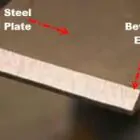Why is it important to clean the welds well after TIG welding with stainless steel? This is true for two strong reasons. For one thing, it looks better. Second, and this is the real deal-maker, keeping welds clean stops corrosion, which is the long-term breakdown of stainless steel. So the only question left is how to get annealing colours out of TIG welds. In this blog we would look at 3 methods of cleaning stainless steel welds.
Methods of Cleaning
In general, there are three tried-and-true ways to get rid of annealing colours in a TIG-welded stainless steel joint:
The chemical method, which uses a pickling fluid made of hydrofluoric, nitric, and sulfuric acids, is more aggressive. Chemical weld cleaning or pickling makes sense for some production processes that are well-organized. The problem with this method is that the pickle is bad for people and the environment, and it also costs money.
The mechanical method involves brushing by hand, for example with a wire brush made of stainless steel, rotating plastic brushes, or non-woven cloths. The low cost of brushes or cloths made of stainless steel is a benefit of mechanical weld cleaning. The bad things about it are that it takes a lot of time and isn’t always reliable.
The method that uses electricity and a fluid called an electrolyte.
Electrochemical cleaning of stainless steel welds is quick, easy, and, most importantly, thorough, even outside of buildings.
All three methods can be helpful in different situations, but they all work pretty much the same way: During welding, the passive layer that was destroyed by the heat of the arc is put back together. In a single work step, the annealing colours are taken off and the metal is “passivated.” But you must have the right tool for cleaning the welds on hand.
In a single work step, the annealing colours are taken off and the metal is “passivated.” But you must have the right tool for cleaning the welds on hand.
What makes a good device to clean welds?
Anyone who wants to buy a professional electrochemical weld cleaner should keep an eye out for a few important features and factors:
- In-depth knowledge of welding technology on the part of the provider.
- Simple to use and easy to understand.
- Just a few steps to get it ready to use.
- Use the electrolyte fluid as little as possible. Dosing is easy and accurate.
- Low amount of energy used.
- The product case should be strong and as light as possible.
- High-quality accessories that can be used in many ways.
- Distributor and service network that is easy to reach and/or local.





